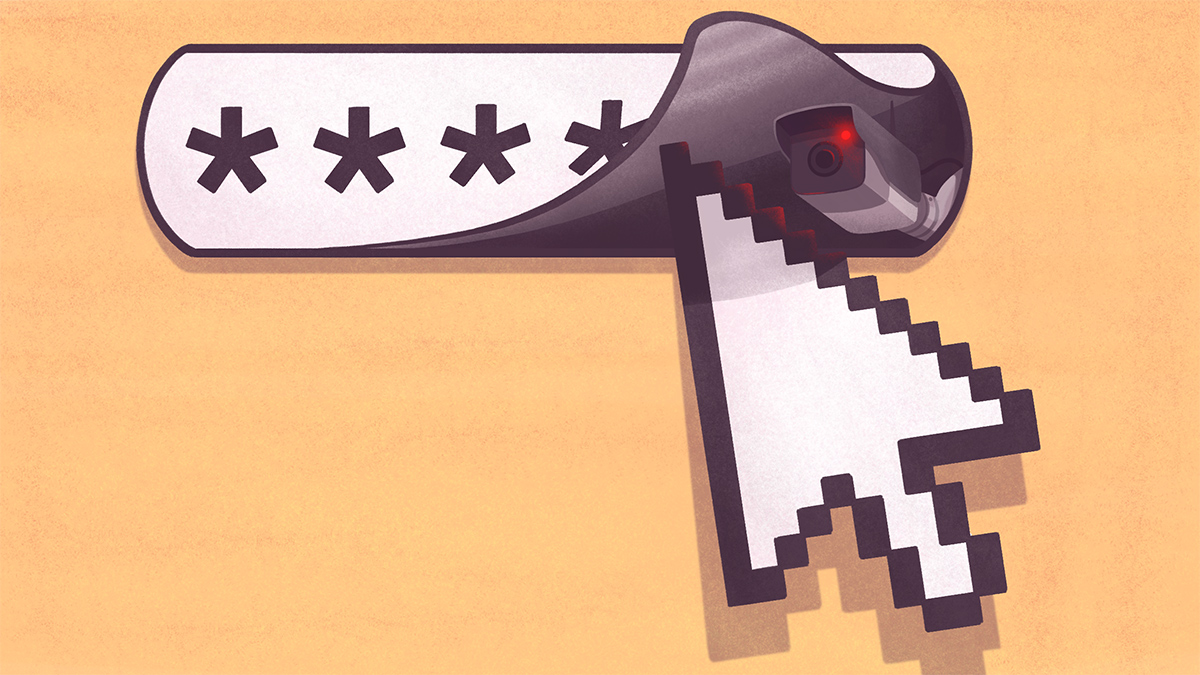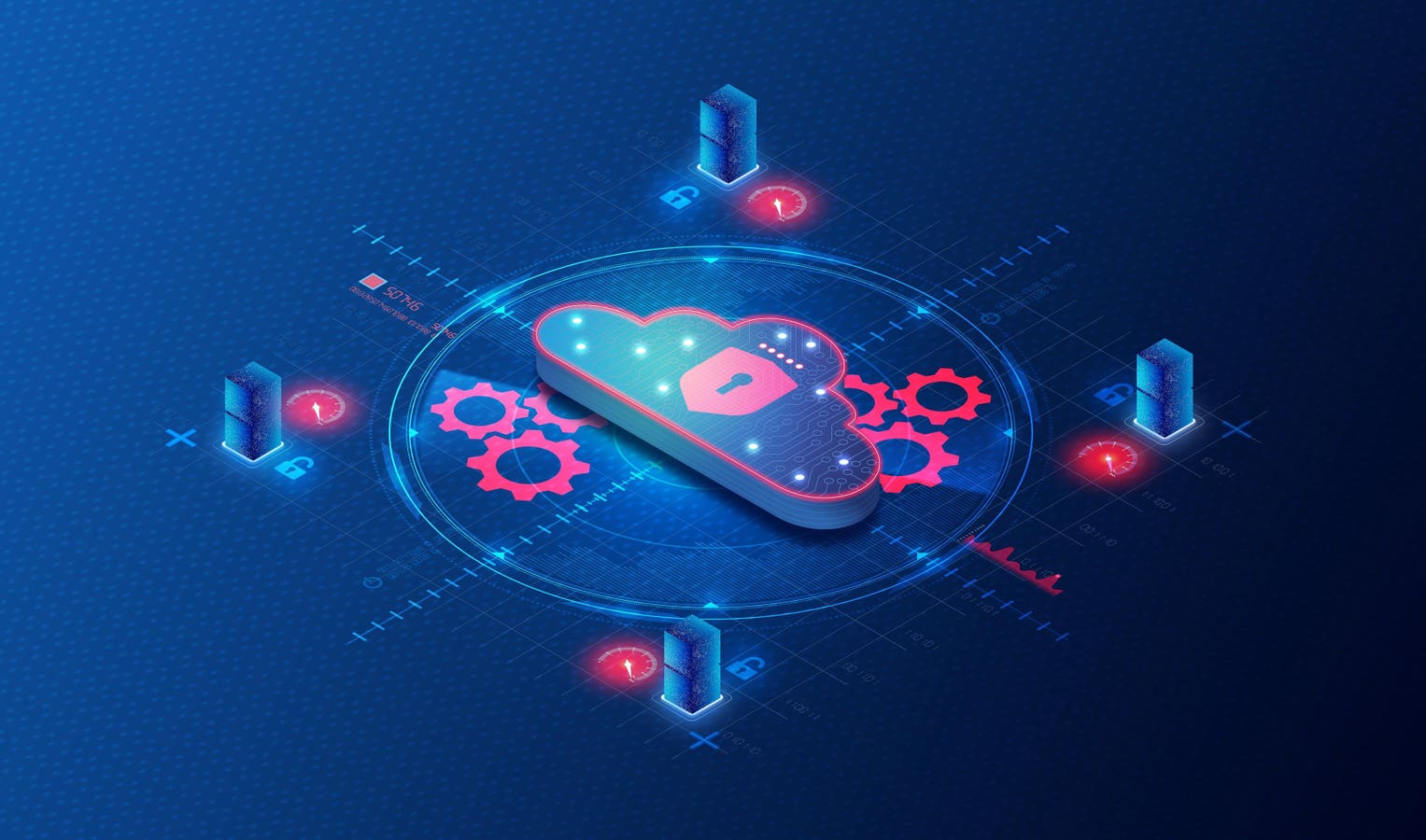Innovation and Technology
Phishing Attacks Are Evolving: Here’s How to Resist Them

Phishing attacks have long been one of the most common forms of cybercrime—but in recent years, they’ve become significantly more sophisticated. No longer limited to generic emails with broken English and suspicious links, today’s phishing attacks can be hyper-personalized, multi-platform, and even AI-generated. As cybercriminals evolve, so must our defenses.
What Is Phishing?
Phishing is a type of cyberattack where attackers impersonate trusted entities to trick individuals into revealing sensitive information like passwords, credit card numbers, or company data. The goal is often to gain unauthorized access to systems or commit financial fraud.
Common Types of Phishing
Email Phishing
The most traditional method, using deceptive emails to lure users into clicking malicious links or downloading malware.
Spear Phishing
Highly targeted attacks tailored to a specific individual or organization. Often uses personal data to appear more legitimate.
Whaling
Phishing attacks aimed at high-level executives or decision-makers, usually involving fraudulent business communications.
Smishing and Vishing
Attacks via SMS (smishing) or voice calls (vishing), exploiting mobile and verbal communication platforms.
Business Email Compromise (BEC)
Fraudsters pose as company executives or vendors to request wire transfers or sensitive data from employees.
How Phishing Attacks Are Evolving
1. AI-Powered Personalization
Cybercriminals now use AI tools to create polished, persuasive emails that mimic natural language. These tools can scrape social media and public profiles to tailor messages that feel authentic and urgent.
2. Deepfake Technology
Attackers can now use AI-generated audio and video to impersonate executives or team members, making phone calls or video messages part of phishing campaigns.
3. Multi-Channel Attacks
Phishing no longer happens through email alone. Scammers use text messages, phone calls, social media, and even collaboration platforms like Slack and Teams to trick targets.
4. Cloud and SaaS Exploits
As businesses move to cloud-based platforms, phishing campaigns often impersonate login portals for tools like Microsoft 365, Google Workspace, or Dropbox to harvest credentials.
5. Phishing-as-a-Service (PhaaS)
Yes, it exists. Some cybercriminals now offer ready-made phishing kits, complete with support and updates—lowering the barrier to entry for wannabe attackers.
How to Recognize a Phishing Attempt
Look for Red Flags
-
Generic greetings (“Dear user”)
-
Urgent or threatening language
-
Unexpected attachments or links
-
Requests for personal or financial information
-
Slightly altered email addresses or domains
Verify the Source
Always confirm requests for sensitive info through an independent channel. If your “CEO” sends a strange email, call them directly to verify.
Inspect Links Before Clicking
Hover over links to preview the URL. If it looks suspicious or doesn’t match the legitimate domain, don’t click.
How to Resist and Prevent Phishing Attacks
1. Educate and Train Employees
Security awareness training should be ongoing, not one-time. Include simulations and refreshers to keep teams alert to new phishing methods.
2. Use Multi-Factor Authentication (MFA)
Even if a password is stolen, MFA adds another layer of security to block unauthorized access.
3. Implement Email Security Tools
Email filters, anti-phishing software, and advanced threat protection can help identify and quarantine suspicious messages.
4. Keep Systems Updated
Regular updates and patches close known vulnerabilities that attackers often exploit in phishing campaigns.
5. Create a Clear Reporting Process
Encourage employees to report phishing attempts immediately. Make it easy for them to escalate suspicious messages to IT or security teams.
6. Limit Access Privileges
Apply the principle of least privilege: give users only the access they need to perform their roles. This limits the damage a compromised account can do.
What to Do If You Fall for a Phishing Attack
Act Fast
Time is critical. Immediately disconnect from the internet, alert your IT team, and report the incident to your organization’s security department.
Change Passwords
Update credentials for any compromised accounts and any other accounts using the same password.
Monitor for Unusual Activity
Keep a close eye on bank accounts, email inboxes, and business systems for any unauthorized actions.
Conduct a Post-Attack Analysis
Review how the attack succeeded and update your training, policies, and tools accordingly.
Conclusion
Phishing attacks are not going away—they’re just getting smarter. To stay protected, individuals and organizations need to be proactive, vigilant, and educated. The good news is that by developing a strong cybersecurity culture and implementing practical safeguards, you can dramatically reduce your risk and better defend against today’s more sophisticated threats.
FAQs
What is the difference between phishing and spear phishing?
Phishing targets a broad audience with generic messages, while spear phishing is highly targeted and personalized to specific individuals or organizations.
How often should organizations conduct phishing awareness training?
Ideally, phishing awareness training should be conducted quarterly, with simulated phishing tests and ongoing education to reinforce best practices.
Is multi-factor authentication enough to stop phishing?
While MFA is a powerful defense, it’s not foolproof. It’s most effective when combined with user awareness, security software, and access controls.
Can phishing happen on social media?
Yes. Attackers can use fake profiles or impersonate trusted contacts to send malicious links or messages on platforms like LinkedIn, Facebook, or Instagram.
What should I do if I accidentally clicked a phishing link?
Disconnect your device from the internet, inform your IT or security team, run a virus scan, and change passwords for affected accounts immediately.
Innovation and Technology
Smarter Security Operations

Introduction to Security Operations Centers
Security Operations Centers are meant to be the command hubs of cybersecurity. But many are bogged down by tool sprawl, false alerts and burned-out teams. Splunk’s State of Security 2025 report shows that security teams are spending more time maintaining tools than stopping threats—and it’s costing them.
I sat down with Michael Fanning, CISO at Splunk, to talk about what insights the reports revealed for him. He summed it up clearly: “The future SOC is extremely streamlined. Analysts will be freed from mundane, repetitive tasks, so they can apply their expertise where it truly matters: defending the organization.”
Too Many Tools, Too Little Time
SOCs today face a flood of alerts. About 59% of respondents say they get too many, and 55% are dealing with too many false positives. That slows down response times and wears down teams. Nearly half of security professionals say they spend more time managing tools than actually protecting systems.
Fanning noted that this isn’t just inefficient—it’s demoralizing. Spending an hour on a low-value alert that turns out to be nothing is frustrating, and it adds up fast. Downtime during an incident can cost over $500,000 per hour.
AI Is Helping—But It’s Not Magic
AI is already making a difference in the SOC. About 59% of security leaders say it has improved their team’s efficiency. Fanning was surprised by how many teams have already started using it. “Greater than 50% of the respondents had mentioned that their security operations are already adopting AI in some form or fashion.”
But AI is not a fix-all. It still needs oversight. Only 11% of respondents fully trust AI for mission-critical decisions. Most prefer a “human-in-the-loop” approach. That means AI helps with repetitive tasks, but people still make the final call.
Fanning put it this way: “I don’t see it as a complete replacement, but more of an aid to help an engineer or an analyst do their job faster than they were before.”
Rethinking Detection for the Real World
Detection engineering is a top skill for modern security teams—but also one of the hardest to find. About 41% of teams say they lack it. Detection as Code is catching on because it lets teams create, test and improve detections like software. But only a third of organizations are using it regularly.
Fanning stressed that quality detection is key. With good data and smart rules, analysts waste less time and respond faster. Better alerts mean better decisions.
Burnout and the Vanishing Foundation
Overwork is a serious problem. More than half of SOCs report staff burnout. Many professionals have even thought about leaving the field.
Some automation can help—but it also raises new questions. If AI handles the basics, how will new analysts learn the fundamentals? Fanning pointed out that his early help desk experience gave him the skills to succeed in cybersecurity. If junior staff skip that step, they may lack the deeper knowledge needed to solve complex problems.
Splunk’s own SOC has automated many tier-one tasks. But instead of cutting jobs, they use the freed-up time for higher-priority work. It’s about shifting focus, not shrinking teams.
Bringing It All Together
One major problem is tool sprawl. Seventy-eight percent of respondents say their tools don’t work well together. That makes fast response harder. When teams adopt a unified platform, they report better results—faster response times, less tool upkeep and stronger coverage.
Security is no longer just a job for the SOC. It takes support from across the company—from HR and IT to legal and engineering. But only a small number of teams always share data across these departments. Fanning says that building those connections is crucial for quicker, more accurate responses.
The Path Forward
The future of the SOC is about using people, processes and platforms in a smarter way. That means making thoughtful use of AI, improving detection methods, closing skill gaps and unifying security workflows.
The threats are faster, and the stakes are higher. But the Splunk report suggests that with the right strategy, SOCs can keep up—and even get ahead.
Conclusion
Security Operations Centers are facing numerous challenges, including tool sprawl, false alerts, and burnout. However, with the help of AI, streamlined workflows, and a unified approach, SOCs can overcome these challenges and become more efficient and effective. By adopting a smarter approach to security, organizations can reduce the risk of cyber threats and protect their assets.
FAQs
Q: What is the main challenge facing Security Operations Centers today?
A: The main challenge facing Security Operations Centers today is tool sprawl, false alerts, and burnout.
Q: How can AI help Security Operations Centers?
A: AI can help Security Operations Centers by improving their team’s efficiency, automating repetitive tasks, and providing better detection methods.
Q: What is the importance of a unified platform in Security Operations Centers?
A: A unified platform is important in Security Operations Centers because it allows teams to work together more effectively, reduces tool upkeep, and provides stronger coverage.
Q: How can organizations reduce the risk of cyber threats?
A: Organizations can reduce the risk of cyber threats by adopting a smarter approach to security, using people, processes, and platforms in a more effective way, and making thoughtful use of AI and detection methods.
Innovation and Technology
Insurance in the Digital Age: Strategies for Managing Risk and Building Resilience

In today’s fast-paced world, digital transformation strategies are revolutionizing the insurance industry, enabling companies to better manage risk and build resilience. With the rise of technology, insurers can now leverage data analytics, artificial intelligence, and other digital tools to improve their operations and provide more personalized services to their customers. As the insurance landscape continues to evolve, it’s essential for companies to adapt and innovate to stay ahead of the curve.
Understanding the Digital Landscape
The insurance industry is undergoing a significant transformation, driven by advances in technology and changing consumer behavior. The proliferation of digital channels, such as online platforms and mobile apps, has created new opportunities for insurers to engage with customers and provide more convenient services. However, this shift also brings new risks, such as cyber threats and data breaches, which insurers must be prepared to mitigate.
The Impact of Digitalization on Insurance
Digitalization is having a profound impact on the insurance industry, from underwriting and claims processing to customer service and marketing. Insurers are using data analytics and machine learning algorithms to better assess risk and personalize policies, while also improving the efficiency of their operations. Additionally, digital platforms are enabling insurers to reach new customers and provide more flexible and affordable products.
Key Trends in Digital Insurance
Several key trends are shaping the digital insurance landscape, including the use of telematics and wearable devices to monitor customer behavior, the rise of peer-to-peer insurance models, and the increasing importance of cybersecurity. Insurers must stay ahead of these trends to remain competitive and provide value to their customers.
Building Resilience in a Digital World
Building resilience is critical for insurers in a digital world, where risks are evolving and intensifying. This requires a proactive approach to risk management, including the use of advanced analytics and scenario planning to identify and mitigate potential threats. Insurers must also invest in robust cybersecurity measures to protect their customers’ data and prevent cyber attacks.
Strategies for Managing Risk
To manage risk effectively, insurers should adopt a range of strategies, including diversification, hedging, and reinsurance. They should also invest in employee training and education to ensure that staff are equipped to handle complex risks and respond to emerging threats. Furthermore, insurers should engage with regulators and industry bodies to stay informed about changing regulatory requirements and best practices.
Role of Technology in Risk Management
Technology plays a vital role in risk management, enabling insurers to analyze large datasets, identify patterns, and predict potential risks. Insurers can use tools such as predictive modeling and machine learning to anticipate and prepare for emerging threats, reducing the likelihood of losses and improving their overall resilience.
Creating a Digital-First Culture
To succeed in a digital world, insurers must create a digital-first culture that prioritizes innovation, agility, and customer-centricity. This requires a fundamental shift in mindset, from a traditional, product-focused approach to a more flexible, customer-driven model. Insurers should invest in digital talent and capabilities, including data scientists, software developers, and user experience designers.
Importance of Customer Experience
Customer experience is critical in a digital world, where customers expect seamless, personalized interactions with insurers. Insurers should use data analytics and customer feedback to design products and services that meet customers’ evolving needs, while also providing multichannel support and engagement.
Role of Innovation in Digital Insurance
Innovation is essential in digital insurance, enabling insurers to stay ahead of the competition and address emerging customer needs. Insurers should invest in research and development, collaborating with startups, fintech companies, and other industry partners to leverage new technologies and business models.
Conclusion
In conclusion, the insurance industry is undergoing a significant transformation, driven by digital transformation strategies and changing consumer behavior. To manage risk and build resilience, insurers must adopt a proactive approach to risk management, leveraging advanced analytics, scenario planning, and robust cybersecurity measures. By creating a digital-first culture, prioritizing customer experience, and investing in innovation, insurers can stay ahead of the curve and provide value to their customers in a rapidly evolving landscape.
Frequently Asked Questions
What is digital transformation in insurance?
Digital transformation in insurance refers to the use of digital technologies, such as data analytics, artificial intelligence, and online platforms, to improve the efficiency, agility, and customer-centricity of insurance operations.
How is digitalization impacting the insurance industry?
Digitalization is having a profound impact on the insurance industry, from underwriting and claims processing to customer service and marketing. Insurers are using data analytics and machine learning algorithms to better assess risk and personalize policies, while also improving the efficiency of their operations.
What are the key trends in digital insurance?
Key trends in digital insurance include the use of telematics and wearable devices to monitor customer behavior, the rise of peer-to-peer insurance models, and the increasing importance of cybersecurity.
How can insurers build resilience in a digital world?
Insurers can build resilience in a digital world by adopting a proactive approach to risk management, including the use of advanced analytics and scenario planning to identify and mitigate potential threats. They should also invest in robust cybersecurity measures to protect their customers’ data and prevent cyber attacks.
What is the role of technology in risk management?
Technology plays a vital role in risk management, enabling insurers to analyze large datasets, identify patterns, and predict potential risks. Insurers can use tools such as predictive modeling and machine learning to anticipate and prepare for emerging threats, reducing the likelihood of losses and improving their overall resilience.
Innovation and Technology
Tech Partnership Reduces Active Suspension Size, Weight, Cost

A new partnership aims to make a comfort feature generally available only in luxury vehicles, smaller and less expensive enough to be offered in more affordable models. That feature is called active suspension. As opposed to what’s known as passive suspension using shock absorbers and springs, active suspension does a better job absorbing road bumps and other inconsistencies and providing a quieter ride using electronic components and sensors.
The Challenges of Active Suspension
The problem is, active suspension systems are heavier and more expensive. They also require 10-15 kilowatts of power, requiring large and heavy DC-to-DC power converters. But a partnership between Andover, Massachusetts-based Vicor and Chinese tech firm Xiamen Hongfa Electroacoustic Co., Ltd., better known as Hongfa, is combining their expertise to solve those issues, the companies announced Wednesday.
The Solution: Compact and Efficient Active Suspension
Hongfa has designed the smallest and lightest active suspension system on the market by combining a 48V architecture and high-density power modules. Four Vicor fixed-ratio BCM6135, 800V-to-48V DC-DC bus converters are used to convert high voltage to 48V and route power to each wheel. Hongfa, a leading manufacturer of power relays, developed a compact, lightweight active suspension system using much less power by incorporating high-density, small, lightweight power modules produced by Vicor.
Key Features of the New Active Suspension System
The Hongfa active suspension system is liquid cooled and is the most compact on the market, weighing 2.6kg and measuring 197 x 201 x 71mm, according to the company. The concept leverages the 48 volt networks replacing 12 volt systems in today’s electrified vehicles aimed at improving efficiency and reducing vehicle size and weight. It’s a power level considered safe for anyone servicing a vehicle, and also allows a major reduction in the size of active suspension system actuators.
How the System Works
The vehicle’s 800 volt battery provides current when the vehicle travels over smooth road surfaces, and the suspension actuation motor is the 48 volt load. When the vehicle travels over a bumpy road, the linear motors in the suspension system momentarily become generators, which increase the voltage on the low side of the converter. This difference in voltage reverses the direction of current flow. The 800V battery then momentarily becomes the load and recovers energy by charging through its battery management control system.
Benefits of the New Active Suspension System
The results could mean a benefit for EV drivers looking to squeeze more driving range from their vehicles’ batteries. “You get a small range increase because of the weight decrease, but also because of the power regeneration, recapturing the power,” said Greg Green, director, automotive marketing at Vicor. Essentially any suspension event, you’re only consuming three to 4% of the total power that was put in, and then 96% or so gets put back into the battery.
Conclusion
The new active suspension system developed by Vicor and Hongfa has the potential to revolutionize the automotive industry by providing a more efficient, compact, and cost-effective solution for luxury and mid-luxury vehicles. With its ability to regenerate power and reduce energy consumption, this system could become ubiquitous across a wider vehicle price range within the next 15 years.
FAQs
- Q: What is active suspension and how does it differ from passive suspension?
A: Active suspension uses electronic components and sensors to absorb road bumps and provide a quieter ride, whereas passive suspension uses shock absorbers and springs. - Q: What are the benefits of the new active suspension system developed by Vicor and Hongfa?
A: The new system is more compact, efficient, and cost-effective, and has the ability to regenerate power and reduce energy consumption. - Q: When can we expect to see the new active suspension system in production vehicles?
A: The first use of the active suspension system incorporating Vicor and Hongfa technology is expected to reach consumers around the end of 2026 or 2027, mainly in luxury and mid-luxury vehicles. - Q: Will the new active suspension system be affected by import tariffs?
A: The impact of import tariffs is expected to be minimal, as Vicor ships its U.S.-made power modules to Hongfa, which builds the finished product.
-

 Career Advice5 months ago
Career Advice5 months agoInterview with Dr. Kristy K. Taylor, WORxK Global News Magazine Founder
-

 Diversity and Inclusion (DEIA)5 months ago
Diversity and Inclusion (DEIA)5 months agoSarah Herrlinger Talks AirPods Pro Hearing Aid
-

 Career Advice5 months ago
Career Advice5 months agoNetWork Your Way to Success: Top Tips for Maximizing Your Professional Network
-

 Changemaker Interviews5 months ago
Changemaker Interviews5 months agoUnlocking Human Potential: Kim Groshek’s Journey to Transforming Leadership and Stress Resilience
-

 Diversity and Inclusion (DEIA)5 months ago
Diversity and Inclusion (DEIA)5 months agoThe Power of Belonging: Why Feeling Accepted Matters in the Workplace
-

 Global Trends and Politics5 months ago
Global Trends and Politics5 months agoHealth-care stocks fall after Warren PBM bill, Brian Thompson shooting
-

 Global Trends and Politics5 months ago
Global Trends and Politics5 months agoUnionization Goes Mainstream: How the Changing Workforce is Driving Demand for Collective Bargaining
-

 Training and Development5 months ago
Training and Development5 months agoLevel Up: How Upskilling Can Help You Stay Ahead of the Curve in a Rapidly Changing Industry





















